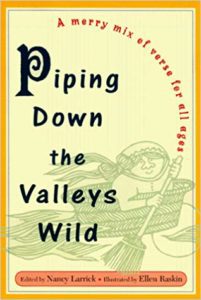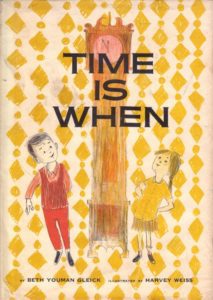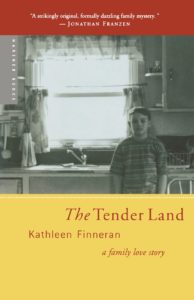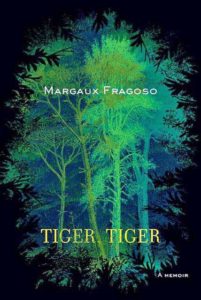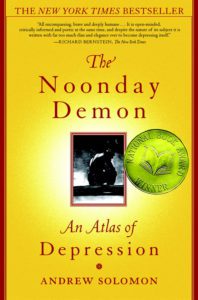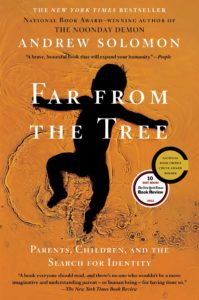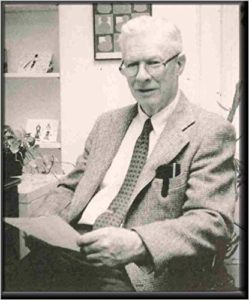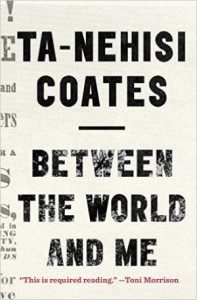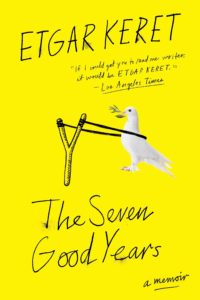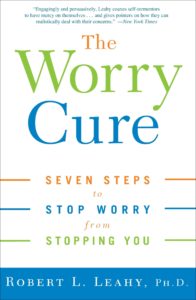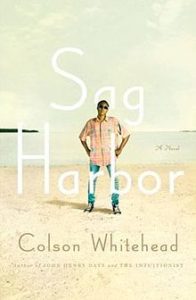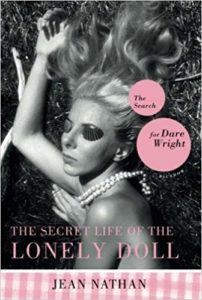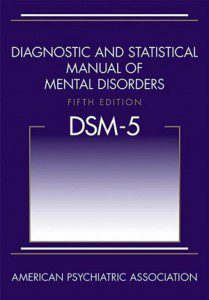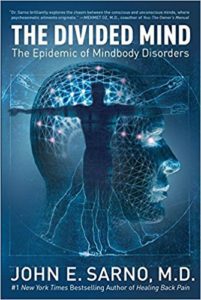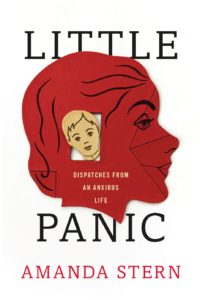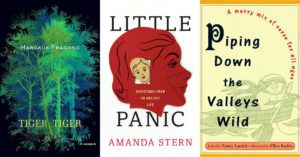
Little Panic: Dispatches from an Anxious Life is a memoir about growing up with an undiagnosed panic disorder in Etan Patz-era Greenwich Village. Instead of being treated for my disordered feelings, my intelligence was chronically tested. The reason and the results were withheld from me and the absence of knowing the answer to myself led me to believe that I was stupid and defective. There was a right way to be, and I wasn’t being it. Because my agony was so overlooked, my aim for this book was to write from inside the experience, to give the reader the chance to live someone else’s existence and to observe the world without their familiar perspective. I was careful to not read too many memoirs, as I’m impressionable and was afraid to inadvertently borrow someone else’s voice and pulse. That said, I did read some memoirs and I also returned to a few books from my childhood hoping to re-create in myself the buried textures and smells of my anxious youth.
***
Piping Down the Valleys Wild edited by Nancy Larrick and illusrated by Ellen Raskin
When I was little, my mother read me poems from this book (I still have it, but it’s missing the cover and spine) and I loved the nights she’d sit by my bed because it meant I didn’t have to worry about her. I needed her near me always because I didn’t trust the world knew how to take care of her and I didn’t trust that she knew how to take care of herself. I’d make her read one poem after another until I fell asleep. When I woke up, the house lights were out, and she was gone, and heartsick, I’d grab my pillow and blanket and inch my way to her bedroom where I’d spend the rest of the night on her couch, where I could hear her breathing.
Time Is When by Beth Youman Gleick and illustrated by Harvey Weiss
My friend Maria Popova gave me a copy of this children’s book. It’s the original 1960 edition, before it was reissued with a different illustrator. She gave it to me while reading a draft of my memoir, and it’s significant and meaningful to me because as a person with an anxiety disorder one thing I’ve always struggled with is time. I can never keep up with it, or it can never keep up with me. Since I was small, it’s always felt like time has carried everyone else into the future, but it’s always passing me, keeping me stuck. This book feels like a gift to my childhood self who felt so invisible and misapprehended. But it also fills me with deep gratitude for having friends who understand the most agonizing features of my life that once went so ignored.
The Tender Land: A Family Love Story by Kathleen Finneran
This is such an exquisite book and I wish more people knew about it. The Tender Land is about the tragic suicide of Kathleen’s brother, fifteen-year-old Sean Finneran, but it’s also about emotion and love and the ways we are all so different, and yet the same. I first read this book years ago, and it’s one of the few memoirs I’ve re-read. It helped me see how to write about closeness and distance at the same time, about the struggle to relate to those you love, and how to address that deepest ache for those you’ve lost, and for the times when you lose yourself.
Tiger, Tiger by Margaux Fragoso
When this book came out it was looked upon scandalously, and while I bought it, I didn’t read it. I waited. Because while our experiences don’t exactly mirror one another, they are reminiscent. When I was fourteen a teacher of mine began to groom me. He was explicit about what he wanted to do to me when I turned eighteen. I knew I wanted to write about the relationship, but I didn’t feel brave enough, or I didn’t know how, or I didn’t know if I should. When I read this book, Fragoso’s forthrightness provided me with the sense that I, too would be able. It seemed she’d made the world safer for me to explore this same arena. While it’s not the subject of my book, it’s included in the narrative.
The Noonday Demon: An Atlas of Depression and Far from the Tree: Parents, Children, and the Search for Identity by Andrew Solomon
Few people can take complicated and abstract concepts and simplify them using heart-stopping prose. This is Andrew Solomon’s purview. The introduction to Far from the Tree alone is worth the price of the entire book. When you suffer from an emotional disorder, perspective is quite difficult, but this is where Solomon soars. He has such an exceptional mind and ability to say so succinctly what I struggle to say at all. Re-reading him is like a refresher course for how to write about emotion in a way that feels valuable and necessary.
Capturing the Essence: How Herman Hall Interpreted Standardized Test Scores by James Shapiro
This book is incredibly hard to find, and you’d have to be in a very niche arena to seek it out. Herman Hall interpreted standardized test scores by studying the answers of the test-takers. He helped parents understand their children by creating a type of road map of a child and interpreting their self-concept. He was a wizard, the rare diagnostician who created stories to understand children in more depth. His career was devoted to taking kids seriously. When I was young he read my test results and his notes on my personality and character are more accurate than anything I’ve ever seen. I included some of his notes in my memoir.
Between the World and Me by Ta-Nehisi Coates
Similar to Solomon, Coates could talk about calculus and I would actually understand it. I’ve admired his brain for years and I was excited to see how he would weave the physical, emotional, and existential traumas of being black in America. While I read a lot about race, I don’t write about it, but I consider Coates a master of the sentence and I wanted to sharpen my brain before sinking in to my own words.
The Seven Good Years by Etgar Keret
I adore Etgar Keret. He’s always on the list of people who, alive or dead, I’d invite to dinner. A story about the most mundane things—a fork dropping on the floor, say—will leave you wondering how he managed to electrify all your senses and render you messy in weep-laughing. It’s a joy to read him, and his interviews are enlightening. I learn something about writing every time I read him, but I also learn the importance of contrasting elements. If you’re going to be funny, your intention should be rooted in some truth you’re afraid to tell.
The Worry Cure: Seven Steps to Stop Worry from Stopping You by Robert Leahy
I read this book often. Anxious people sometimes have trouble retaining things, no matter how vital those things are. This book is a gateway to understanding your own worry, but understanding yourself can be overwhelming, and I often read it, forget, re-read, retain, forget again and on we go. But I am always brought back to Leahy’s clarity, and each time I return to this book, I feel myself closing in on the perspective that is so hard to find when panicked.
Sag Harbor by Colson Whitehead
I love this book so much, and I knew it was a safe memoir for me to read because there’s simply no way to even accidentally write like Colson Whitehead. When I was writing my book, an author friend told me I needed to make it funny. This was a tall order, not because I’m not funny, but because I just can’t find the funny in having gone so long living with an undiagnosed panic disorder, but Colson is truly one of the funniest people I know in life and on the page and I studied how he did it and then, of course, promptly forgot it all.
The Secret Life of the Lonely Doll: The Search for Dare Wright by Jean Nathan
This is such a wonderful book, and one of my absolute favorites. Dare Wright wrote The Lonely Doll, a book I read as a child that stayed with me as a texture and atmosphere of the time in which I read it. This compulsively readable book is about its author and her warped relationship with her mother and with herself. When writing my book, I needed something to take me back to a sort of smell-feeling and this book allows for that to happen, every single time I read it.
The DSM (any and all of them)
I love the DSM. Every revision. I find these books to be so remarkably right on target and so off-base, all at once. The world we live in doesn’t seem to understand human beings and all their variance. We pathologize absolutely everything from smoking cigarettes to being bad at math. My childhood was spent in doctor’s offices, taking IQ tests and other cognitive, linguistic, and neural exams to try and diagnose something no one could see. The ways in which I was overlooked, ignored, and unseen are a reflection of how people do not take children seriously, and this book is a testament to the misguided desire to categorize and classify human beings instead of accepting that our natural state is variant, and fluid. This book reminds me what I believe in.
The Divided Mind: The Epidemic of Mindbody Disorders by John Sarno
John Sarno was known for curing people’s back ailments, but he was one of the first to popularize the mind-body problem. To him (and to me) psychosomatic illness is not something that doctors should be dismissing. The connection between your brain and your conscious experience seems fundamentally obvious. Yet, doctors so often dismiss pain whose root is psychological because that means emotional and emotions don’t cause physical symptoms. Obviously, this is false, but to this day doctors will tell (usually female) patients that something is “all in your head.” And they’re right. Yes, it IS in my head (although not all of it. Some of it is being directed to the body). Now, go look in my head and help me understand what’s going on. Sarno was the guy who helped you understand. He would validate a patient’s invisible pains by listening and believing his patient. He led people through the process of releasing their buried rage and unprocessed grief. And once they did that, they were pain free. John Sarno believed people like me who suffer from invisible things. I wish I’d been lucky enough to have met him.
And to close out this wonderful list, we just had to include Amanda’s new memoir,Little Panic: Dispatches from an Anxious Life, available now from Grand Central Publishing! – Ed.
Little Panic: Dispatches from an Anxious Life by Amanda Stern
The world never made any sense to Amanda Stern—how could she trust time to keep flowing, the sun to rise, gravity to hold her feet to the ground, or even her own body to work the way it was supposed to? Deep down, she knows that there’s something horribly wrong with her, some defect that her siblings and friends don’t have to cope with. Stern’s memoir is a document of the transformation of New York City and a deep, personal, and comedic account of the trials and errors of seeing life through a very unusual lens.

